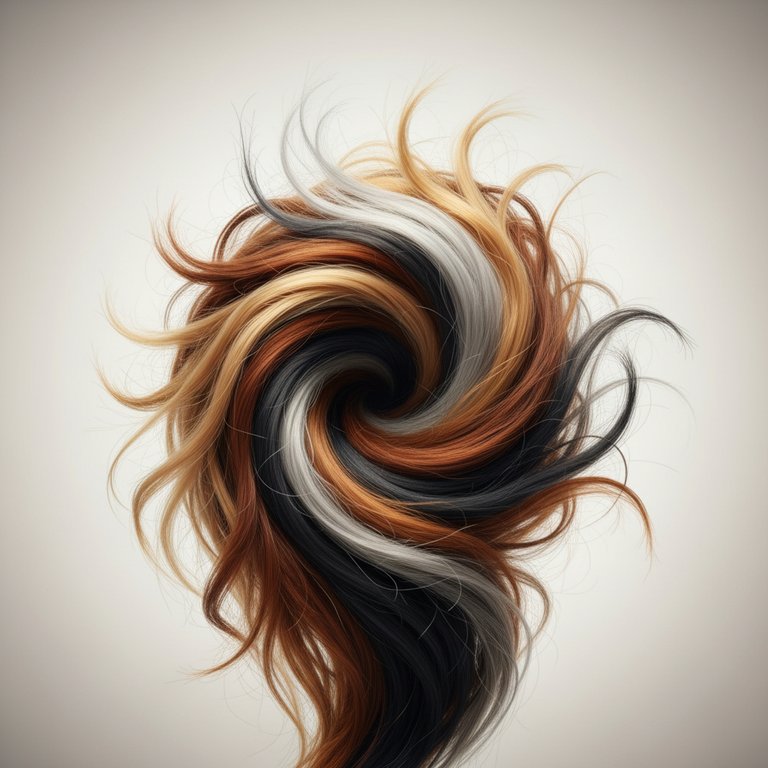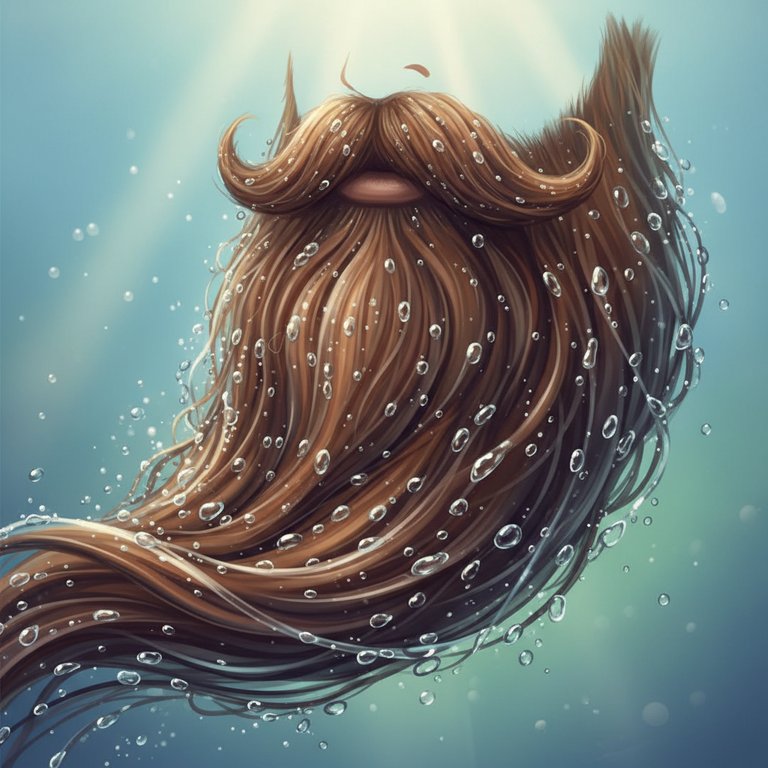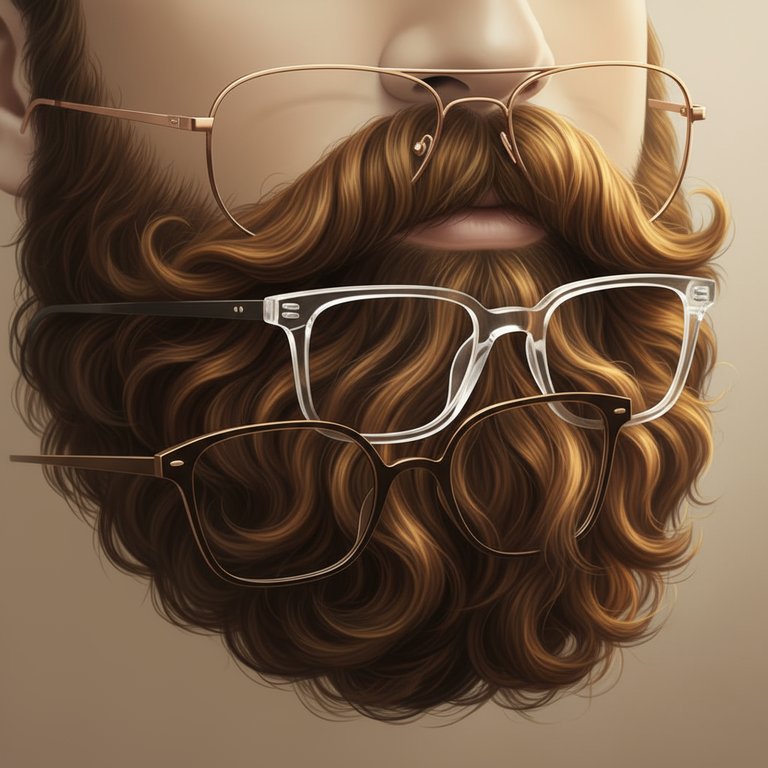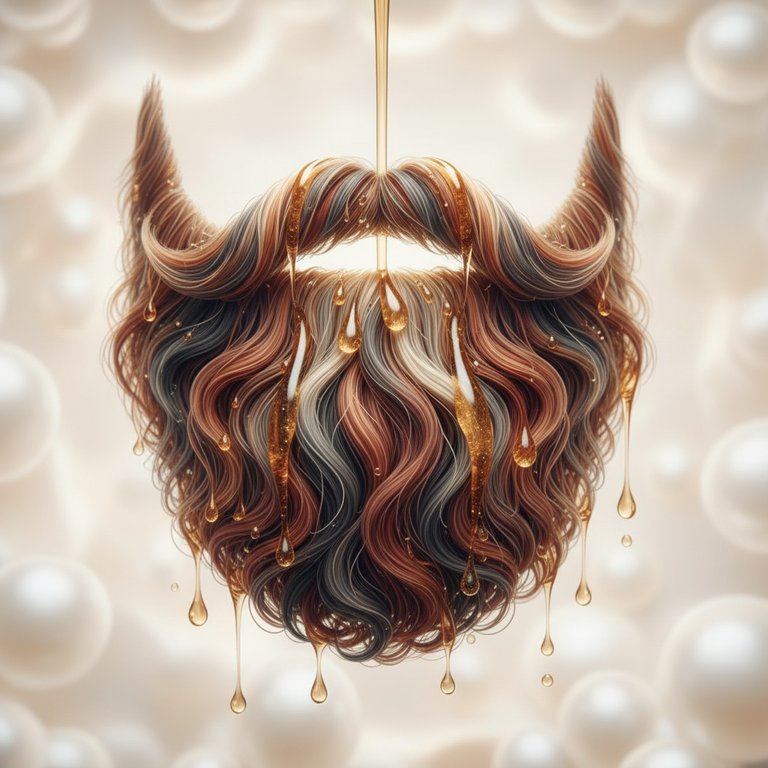Ever looked in the mirror and noticed your beard rocking a totally different vibe than the hair on your head? Maybe your head hair is a deep brown, but your beard is sporting some surprising streaks of red, gold, or even a mix of lighter shades. Or perhaps your mustache has a mind of its own, refusing to match the rest of your glorious facial hair. If you’ve ever found yourself scratching your chin (or your head!) wondering, “Why is my beard a different color than my head hair?” – you’re definitely not alone, my friend.
It’s a super common phenomenon, and honestly, it’s one of the coolest quirks of growing a beard. Instead of being a “problem,” think of it as your beard’s way of showing off its unique personality. Today, we’re going to dive into the fascinating reasons behind this color variation, and more importantly, how to embrace and rock your multi-tonal masterpiece with confidence!
The Science Behind Your Beard's Unique Hue
Alright, let’s get a little bit into the “why” without getting too bogged down in textbook jargon. The color of your hair, whether on your head or your face, is primarily determined by pigments called melanin. There are two main types of melanin:
- Eumelanin: This pigment is responsible for black and brown hair colors. The more eumelanin you have, the darker your hair will be.
- Pheomelanin: This pigment gives hair its red and yellow tones. If you have more pheomelanin, you’re likely to see those fiery reds and vibrant golds.
The specific color of each individual hair strand is determined by the ratio and amount of these two melanin types produced by the hair follicles. And here’s the kicker: the follicles on your face can produce different ratios of these pigments than the follicles on your scalp! Think of your body as a complex artist, and each hair follicle is given a slightly different palette to work with.
It's All in Your Genes, My Friend
When it comes to hair color, genetics play a massive role, and it’s not as simple as inheriting one specific hair color gene from mom or dad. Hair color is what we call a “polygenic trait,” meaning it’s influenced by multiple genes working together. You inherit a whole mix of genes from both sides of your family tree, and these genes can express themselves differently in various parts of your body.
Imagine your DNA as a giant instruction manual. For some reason, the instructions for your beard follicles might be slightly different from the instructions for your head hair follicles. You might carry genes for red hair from a grandparent you’ve never even met, and while those genes might not be dominant enough to turn your head hair red, they could pop up in your beard! It's like your beard is a little rebel, expressing some of those recessive genes that your head hair decided to ignore.
This genetic lottery explains why you might have a brown head of hair but a beard with streaks of red, or why your beard might be darker or lighter overall. It's truly a unique genetic tapestry.
Hormones: The Unsung Influencers of Hair Characteristics
While genetics lay the foundation, hormones also play a significant, albeit subtle, role in your beard’s characteristics, including its color. Androgens, like testosterone, are crucial for stimulating beard growth. Fluctuations in these hormones can influence the hair growth cycle and, to some extent, the way pigments are expressed in your hair follicles.
It's not about hormones *changing* your hair color dramatically overnight, but rather their influence on the overall health and characteristics of the hair that grows. A healthy beard, nourished by a well-balanced system, tends to show its true, vibrant colors. Think of it as hormones creating the perfect environment for your genetic predispositions to shine through.
The Aging Game: When Colors Start to Shift
Just like the hair on your head, your beard will eventually start to introduce some distinguished silver and white strands as you age. This process, known as canities, happens when the hair follicles stop producing melanin. What’s interesting is that your beard often grays at a different pace, or even in different patterns, than your head hair.
You might find your beard starting to go gray much earlier than your head hair, or vice versa. Some guys get a “salt and pepper” beard while their head hair remains relatively dark. Others might see their mustache turn white first. It’s just another layer of individuality that time adds to your facial hair journey.
Embracing Your Multi-Tonal Masterpiece: A Guide to Confidence
So, you’ve got a beard with its own unique color story. Awesome! Here’s a little guide on how to not just accept it, but truly celebrate it.
Step 1: Understand and Appreciate Its Uniqueness
First and foremost, understand that a multi-colored beard is normal and often seen as a sign of character and depth. It’s not a flaw; it’s a feature! Think of it as a natural highlight reel, adding dimension and interest that a single-colored beard might lack. Your beard is telling a story of your unique genetic makeup, and that’s something to be proud of.
Step 2: Prioritize Health for Radiance
Regardless of color, a healthy beard always looks better. Focus on a consistent grooming routine that keeps your beard clean, hydrated, and well-nourished. Healthy hair, no matter its hue, will always have a better shine and texture, which helps all those different colors pop beautifully.
- Wash and Condition: Use a dedicated beard wash and conditioner a few times a week to keep it clean and soft.
- Beard Oil: Apply a good quality beard oil daily to moisturize the hair and the skin underneath. This helps prevent dryness and promotes a healthy sheen.
- Beard Balm: Follow up with a beard balm for extra conditioning and light hold, helping to tame any stray hairs and add a polished look.
- Comb/Brush Regularly: This helps distribute natural oils and grooming products evenly, detangles, and keeps your beard looking neat.
Step 3: Style to Highlight Your Natural Contrast
Instead of trying to hide the different colors, use styling to make them look intentional. A well-trimmed and shaped beard will always look more put-together, regardless of its color variations. The different tones can actually add a fantastic visual texture, making your beard look thicker and fuller.
Experiment with different beard lengths and styles. Sometimes, a slightly longer beard can allow the different colors to blend more harmoniously, while a shorter trim might make the contrasts more pronounced and striking. Find what works best for your face shape and personal style.
Pro Tips for Rocking Your Unique Beard Color
Here are a few extra nuggets of wisdom to help you make the most of your multi-hued facial hair:
- Embrace the Contrast: Your beard isn't trying to match your head hair; it's doing its own thing! See the different colors as a feature, not a bug. It adds character and makes your beard truly yours. My buddy, Mark, has dark brown hair but a beard that’s almost entirely red – and it looks incredibly distinctive and cool on him.
- Good Lighting is Your Friend: Pay attention to how your beard looks in different lighting. Natural daylight often brings out the most subtle nuances in color, while artificial light can sometimes make it appear more uniform or, conversely, highlight certain shades more dramatically.
- Keep it Trimmed and Tidy: A well-maintained beard, even with varying colors, always looks purposeful. Regular trims keep the shape sharp and prevent it from looking unruly.
- Hydration and Nutrition: While not a quick fix for color, a healthy lifestyle contributes to healthy hair growth overall. Staying hydrated and eating a balanced diet supports your body’s natural processes, which in turn can contribute to vibrant-looking hair.
FAQ: Your Burning Beard Color Questions Answered!
Why does my beard have red hairs when my head hair is brown?
This is super common and comes down to your genetics! You likely carry genes for red hair (specifically, genes that lead to higher pheomelanin production) from somewhere in your family tree, even if they aren't dominant enough to turn your head hair red. Your beard follicles just happen to express those genes more strongly, giving you those awesome reddish tones.
Can my beard color change over time?
Absolutely! The most common change is graying, where your beard may start to show silver or white hairs at a different rate or pattern than your head hair. Hormonal shifts or even prolonged sun exposure can also subtly influence the appearance of your beard hair over time, making it seem lighter or slightly altered.
Is it normal for my mustache to be a different color than the rest of my beard?
Totally normal! Just like different parts of your body can have different hair colors, your mustache follicles can produce a different melanin ratio than the hair on your chin or cheeks. It's all part of the unique genetic blueprint that makes your facial hair yours.
How can I make my multi-colored beard look intentional and awesome?
The key is good grooming and confidence! Keep your beard clean, moisturized with beard oil, and styled with balm. Regular trims will maintain a sharp shape. The different colors add depth and character, so let them shine! Think of it as natural highlights or lowlights that make your beard stand out in a good way.
Should I try to dye my beard to match my head hair?
That's a personal choice! Many guys embrace their multi-colored beard as a unique feature. If you do consider coloring, be mindful that beard hair can react differently to dyes than head hair. It's often coarser and can absorb color differently. Always follow product instructions carefully, and maybe test a small, inconspicuous area first. Some prefer to seek advice from a professional stylist who specializes in men's grooming for the best results.
What grooming products are best for a beard with multiple colors?
The best products are those that promote overall beard health and shine! Look for a gentle beard wash, a hydrating beard conditioner, a nourishing beard oil, and a shaping beard balm. Products that add moisture and vitality will make all your beard’s colors look rich and vibrant, regardless of their specific hue.
Why does my beard appear darker or lighter in different lighting?
This is a common visual effect! Different lighting conditions can emphasize various pigments in your hair. For example, warm indoor lighting might bring out red or golden tones, while bright natural sunlight might make your beard appear lighter overall. It's more about how light reflects off your hair and less about the hair itself changing color.
Conclusion
So, there you have it! The “mystery” of your multi-colored beard isn't a mystery at all, but rather a fascinating display of genetics, biology, and individuality. Instead of wondering why your beard doesn’t perfectly match your head hair, embrace it as a signature part of your look.
Your beard is unique, just like you. Keep it healthy, keep it groomed, and wear it with pride. After all, a beard with a story to tell is far more interesting than one that blends in! Rock those different shades, my friend – they make your beard truly one-of-a-kind.
Disclaimer: This content is for informational purposes only and should not be taken as medical advice. Always consult with a qualified professional for any health concerns or before making any decisions related to your health or well-being.



